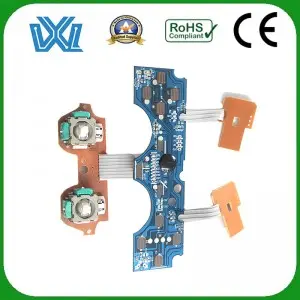A PCB (Printed Circuit Board) calculator is an indispensable tool for anyone working in the electronics industry. These efficient software programs help engineers, designers, and hobbyists determine the optimal size, parameters, and cost of a PCB project. However, some users may find it challenging to grasp the full potential of these calculators. In this blog, we’ll explore how to get the most out of your PCB calculator, explain its various features and provide practical tips for accurate calculations. So, let’s dig in and uncover the secrets behind these powerful tools!
1. Understand the basic knowledge of PCB calculator
To get started with PCB calculators, we need to understand their basic functionality. The PCB Calculator contains a series of mathematical formulas and algorithms that allow users to calculate basic design parameters. These parameters can include trace width, trace spacing, via size, and impedance control. In addition, the Advanced Calculator provides capabilities for bill of materials (BOM) estimation, cost analysis, thermal management, and more. Familiarity with the various functions and their uses enables users to utilize the full potential of these tools.
2. Choose the right PCB calculator for your project
It is crucial to choose the right PCB calculator according to the specific project requirements. Several online platforms offer a large number of calculators covering different aspects of PCB design. Deciding which calculator is right for your project goals and level of expertise is critical. Whether it’s a simple calculator for calculating track width or comprehensive software for BOM estimation, choosing the right tool will simplify your design process and increase accuracy.
3. Improve productivity with advanced features
Once you’ve identified the right PCB calculator, you can explore its advanced features to dramatically increase your productivity. Some calculators, such as those used for BOM estimation, allow you to import layout files directly into the tool. This simplifies the estimating process by automating component identification and quantity calculations. Additionally, implementing a calculator that provides thermal analysis can help optimize heat dissipation and prevent PCB failure. Maximizing the use of such advanced features increases efficiency and simplifies the overall design process.
4. Verify the accuracy of calculation results
While PCB calculators simplify the design process, it is critical to verify the accuracy of the calculation results. It is always recommended to double check key parameters such as track width, clearance and impedance manually. Cross-referencing the calculator’s results with industry standards and design guidelines ensures that your designs will function optimally and avoid any potential problems during manufacturing or assembly.
PCB calculators are powerful tools that help designers and engineers accurately calculate essential design parameters. By understanding the basics of these calculators, selecting the appropriate one, utilizing advanced features, and validating the results, users can simplify the design process and efficiently achieve accurate PCB designs. So, embrace the power of PCB Calculator and take your electronic design work to new heights!
Post time: Aug-18-2023

